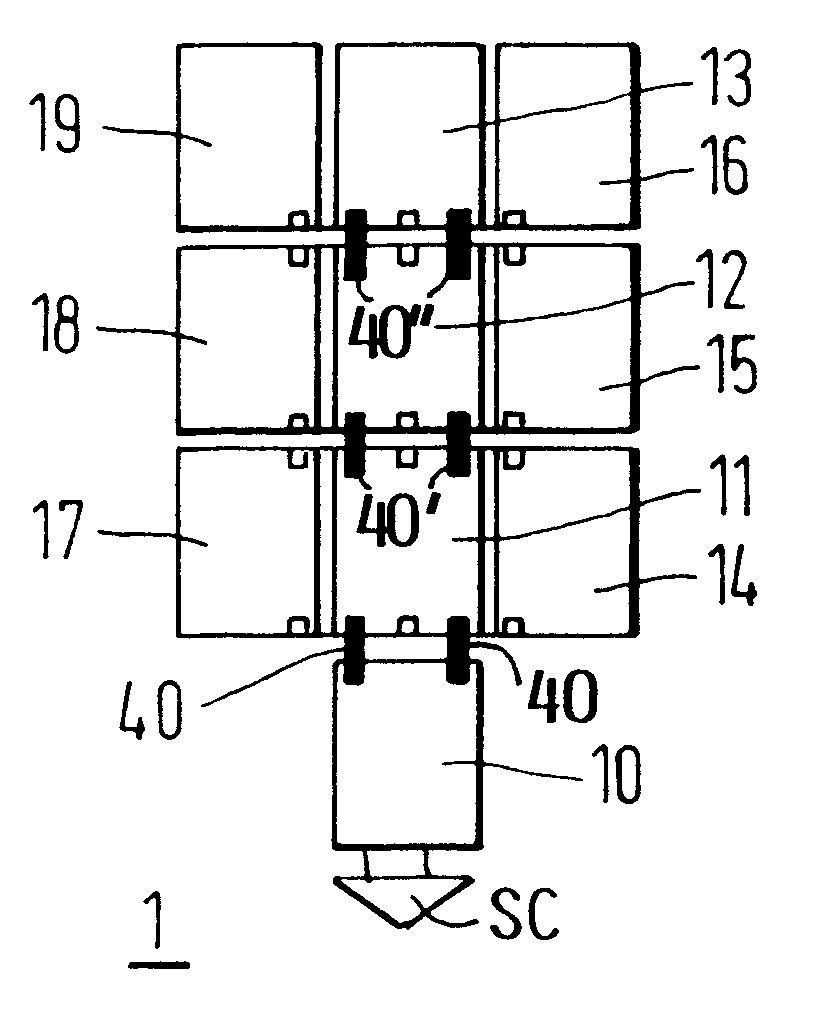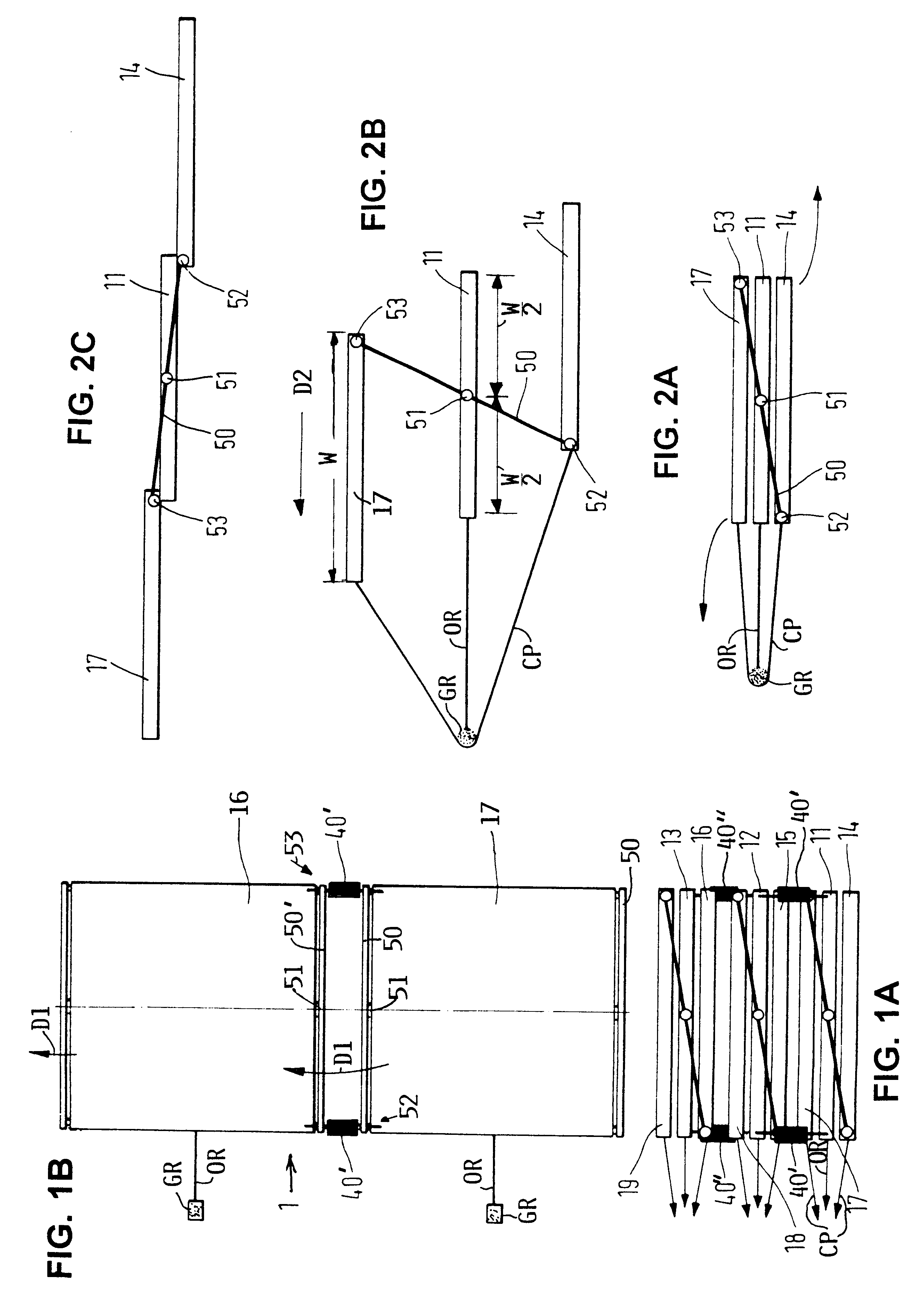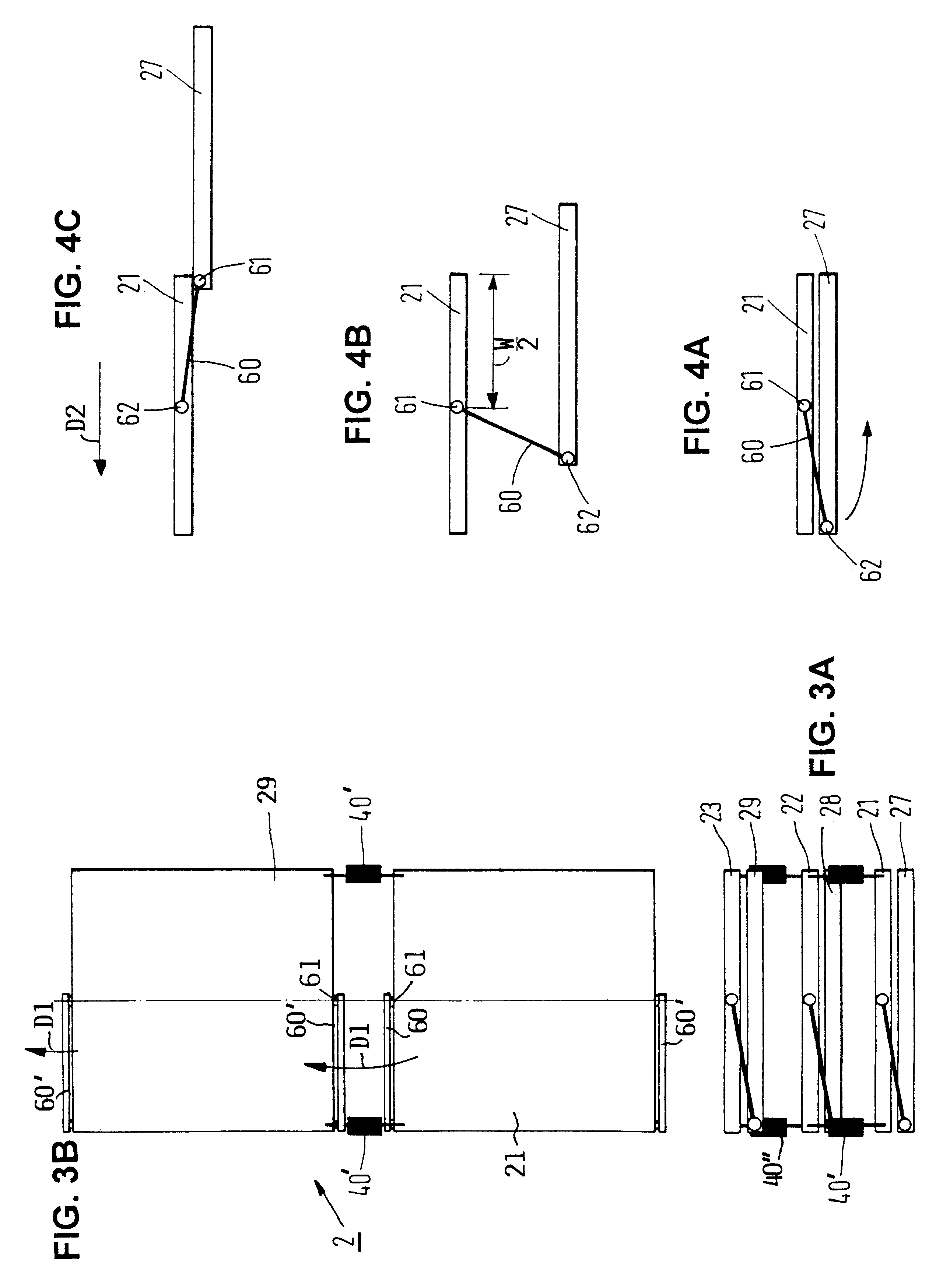Solar generator with foldable panels especially for a spacecraft
a solar generator and spacecraft technology, applied in electrochemical generators, cosmonautic vehicles, batteries, etc., can solve the problems of affecting the flight of the spacecraft, requiring substantial effort and expense, and testing such generators with flap open motion under earth gravity conditions, so as to avoid or avoid generating undesirable torque moments
- Summary
- Abstract
- Description
- Claims
- Application Information
AI Technical Summary
Benefits of technology
Problems solved by technology
Method used
Image
Examples
second embodiment
A second embodiment will now be described with reference to FIGS. 3A, 3B, 4A, 4B, 4C, 7C and 7D. In this embodiment each packet of the solar collector 2 comprises two panels as best seen in FIG. 4A. Panels 20, 21, 22 and 23 are referred to as first panels which are hinged to each other by the hinges 40' and 42" as described above with reference to the first example embodiment. Accordingly, the first panels can be unfolded in the manner of pleats of a bellows in the first direction D1. Second panels 27, 28 and 29 are coupled to the first panels only along one side thereof as shown in FIG. 7C. In another arrangement of second panels, the second panels 25, 27 and 29 are coupled to the first panels as shown in FIG. 7D showing the panel 25 on one side of the first panels and staggered relative to the second panels 27, 29 on the other side of the first panels. Here again, the first panels are foldable and unfoldable in the direction D1 while the second panels are laterally shiftable with ...
PUM
 Login to View More
Login to View More Abstract
Description
Claims
Application Information
 Login to View More
Login to View More - R&D
- Intellectual Property
- Life Sciences
- Materials
- Tech Scout
- Unparalleled Data Quality
- Higher Quality Content
- 60% Fewer Hallucinations
Browse by: Latest US Patents, China's latest patents, Technical Efficacy Thesaurus, Application Domain, Technology Topic, Popular Technical Reports.
© 2025 PatSnap. All rights reserved.Legal|Privacy policy|Modern Slavery Act Transparency Statement|Sitemap|About US| Contact US: help@patsnap.com



